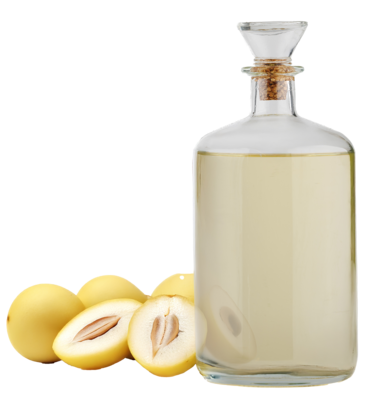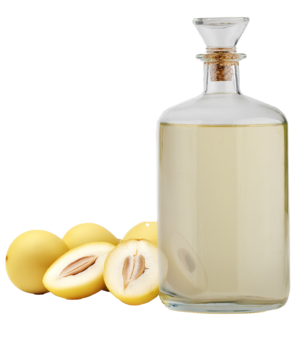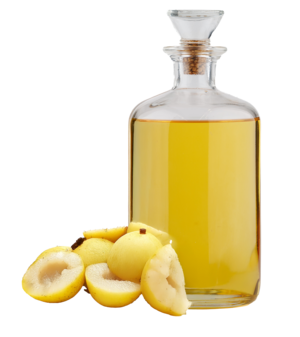Our Marula oil qualities
We carry Marula oil in the following qualities for you
Usage
|
Cosmetics |
Food |
Pharmaceutics |
|
|---|---|---|---|
| Marula oil refined | |||
| Marula oil cold pressed |

Marula tree & marula fruit
he Marula tree (Sclerocarya birrea) is native to sub-equatorial Africa and thrives under warm and frost-free weather conditions. It belongs to the sumac family just like the mango tree. With a height of up to 20 metres, it is one of the largest indigenous African plants. Wild growing Marula trees have a mighty crown and can reach a trunk diameter of up to 80 centimetres or more. The fruits are produced exclusively by female plants. They are about the size of a plum and elongated, have a pale yellow, leathery skin which encloses the fibrous, light-coloured flesh. The marula fruit contains four times as much vitamin C as an orange. The juice extracted from the marula fruit pulp can be processed into liqueur and is marketed worldwide as a wild fruit cream liqueur by the South African-based brand Amarula. The hard nut is located in the middle of the fruit. A special stone is used to crack it open by hand. Once the nut is cracked, two or three seeds appear, which are used for oil production.
The synonym "elephant tree" goes back to the pleasurable eating of the fruit by the heavy quadrupeds. In the past, it was believed that already fermented, alcoholic fruits made the animals drunk. In the Kruger National Park you can regularly see staggering elephants. Current researches show, however, that the cause is not the marula fruits, but that the animals also consume poisonous beetle pupae living in the bark of the trees when they nibble the bark, which causes the elephants intoxicated conditions.
Would you like to be informed about the general market situation of Marula oil and our other products?
subscribe to market reportCultivation & yield
The Marula tree grows cross-country in sub-Saharan Africa. As it is very leafy and thus provides a lot of shade, it is a popular place for traditional tribal gatherings and " Lekgotlas" (meetings). The main harvest period of the Marula fruit is between February and March. The harvest secures jobs, because the Marula fruits can only be harvested by hand.
Even with very little rainfall, the harvest of the fruit from which the Marula oil is produced, is considerable. A single Marula tree can produce between 500 kilograms and two tons of fruit. The tree grows on open, natural and forested grassland.
It is not possible to cultivate the Marula tree. It is 100% wild collection. Since the local population can use and distribute both the fruit and the seeds, the Marula tree contributes to the family income of the collectors. Thus, the Marula tree is protected and hardly used as firewood.

Background / history
The Marula tree originally comes from Africa. There it is preserved and honoured because of the manifold use of different parts of the tree. There are different Marula beers, a Marula wine and the famous cream liqueur Amarula. The fruits are consumed, the bark, roots and leaves are used in traditional medicine.
The locals also call it the "Wedding Tree" because in Zulu culture it is believed that couples who marry under this tree will have a long, strong and fertile marriage.
190
kg
Drum
27
kg
Canister
General durability: canister 12 months, drum 18 months
Composition
| C16:0 Palmitic acid | 9 – 13 % |
| C18:0 Stearic acid | 4 – 8 % |
| C18:1 Oleic acid | 70 – 80 % |
| C18:2 Linoleic acid | 4 – 9 % |
You want to buy Marula oil?
Request now free of charge and without obligation from Gustav Heess. We deliver Marula oil ...
- worldwide
- fast
- reliable
We offer Marula oil in the following packaging units:
-
190
kg
Drum -
27
kg
Canister

